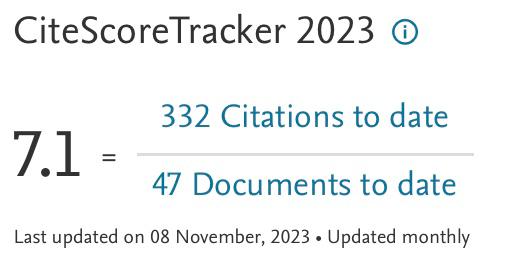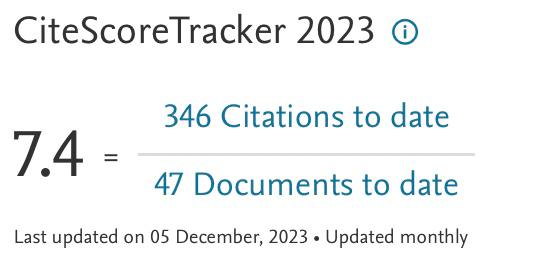Comparison Study between Galerkin Finite Element Method and Finite Volume Method for Diffusion Problem
DOI:
https://doi.org/10.37934/arnht.15.1.2442Keywords:
Galerkin finite element method, Finite volume method, Steady diffusion, Transient diffusionAbstract
The finite element method (FEM) is a robust and widely applied numerical scheme in the simulation of engineering problems, especially in structural mechanics. However, FEM is not as popular as the finite volume method (FVM) in Computational Fluid Dynamics (CFD), possibly due to its complicated numerical procedures. Indeed, FEM possesses tremendous advantages compared with FVM, particularly in dealing with complex geometry and rendering attractive flexibility to modify the interpolation functions. It is well-known that FEM and FVM differ in mathematical formulation, yet there is a lack of practical comparison between them. Therefore, the paper aims to develop a Galerkin FEM (GFEM) model, investigate its strengths and weaknesses compared with FVM, and discuss the conciliation between FEM and FVM. Our case study focuses on a two-dimensional diffusion problem comprising steady and transient cases, with and without heat generation. Our investigation revealed that GFEM does not possess conservative properties, which might yield spurious heat flux, leading to a 2 – 4% overestimation of the temperature field, depending on the amount of heat generation. Moreover, GFEM incurs approximately 34% higher computational time than FVM. However, FVM can be perceived as a special form of GFEM, and their relations were discussed.
Downloads
References
Hutton, D. V. Basic Concept of the Finite Element Method, Fundamentals in Finite Element Analysis, 2004, 1–19.
Mahur, B. P., Bhardwaj, Y. and Bansal, V. "Review on finite element analysis for estimation of residual stresses in welded structures." Materials Today: Proceedings 4, no. 9 (2017): 10230–10234. https://doi.org/10.1016/j.matpr.2017.06.354.
Shetty, N., Shahabaz, S. M. and Sharma, S. S. "Divakara Shetty, S. A review on finite element method for machining of composite materials." Composite Structures 176 (2017): 790–802. https://doi.org/10.1016/j.compstruct.2017.06.012.
Zhang, Z., Yu, J., Liu, H. and Chen, Z. "Experimental and finite element study on lateral global buckling of pipe-in-pipe structure by active control method." Applied Ocean Research 92 (2019): 101917. https://doi.org/10.1016/j.apor.2019.101917.
Long, C. S., Loveday, P. W., Ramatlo, D. A. and Andhavarapu, E. V. "Numerical verification of an efficient coupled SAFE-3D FE analysis for guided wave ultrasound excitation." Finite Elements in Analysis and Design 149 (2018): 45–56. https://doi.org/10.1016/j.finel.2018.05.001.
Yin, J., Xu, L., Wang, H., Xie, P., Huang, S., Liu, H., Yang, Z. and Li, B. "Accurate and fast three-dimensional free vibration analysis of large complex structures using the finite element method." Computers & Structures 221 (2019): 142–156. https://doi.org/10.1016/j.compstruc.2019.06.002.
Cooper, R. J., Wilcox, R. K., Jones, A. C. "Finite element models of the tibiofemoral joint: A review of validation approaches and modelling challenges." Medical Engineering & Physics 74 (2019): 1–12. https://doi.org/10.1016/j.medengphy.2019.08.002.
Hew, Z. C., Chan, B. T., Wan Ab Naim, W. N., Dokos, S., Tey, W. Y. and Liew, Y. M. Electro-Mechanical Finite Element Model of Left Ventricular Hypertrophy. In: Usman, J., Liew, Y.M., Ahmad, M.Y., Ibrahim, F. (eds) 6th Kuala Lumpur International Conference on Biomedical Engineering 2021. BIOMED 2021. IFMBE Proceedings, 86, 2022. Springer, Cham. https://doi.org/10.1007/978-3-030-90724-2_12.
Mozafari, F., Thamburaja, P., Srinivasa, A. and Abdullah, S. "Fatigue life prediction under variable amplitude loading using a microplasticity-based constitutive model." International Journal of Fatigue 134 (2020): 105477. https://doi.org/10.1016/j.ijfatigue.2020.105477.
Mozafari, F., Thamburaja, P., Moslemi, N. and Srinivasa, A. "Finite-element simulation of multi-axial fatigue loading in metals based on a novel experimentally-validated microplastic hysteresis-tracking method." Finite Elements in Analysis and Design 187 (2021): 103481. https://doi.org/10.1016/j.finel.2020.103481.
Versteeg, H. K., Malalasekera, W. An Introduction to Computational Fluid Dynamics: The Finite Volume Method (Second.), 2004, Pearson Prentice Hall.
Patankar, S. V. Numerical Heat Transfer and Fluid Flow, 1980.
Lee, C. E., Tey, W. Y. and Tan, L. K. "The investigation on SIMPLE and SIMPLER algorithm through lid driven cavity." Journal of Advanced Research in Fluid Mechanics and Thermal Sciences 29 (2017): 10–23.
Tey, W. Y., Wong, R., Asako, Y., Kang, H. S. and Ng, K. C. "Analysis on computational efficiency of convection discretisation schemes in SIMPLE algorithm." Journal of Advanced Research in Fluid Mechanics and Thermal Sciences 58, no. 1 (2019): 100–117.
Peskin, C. S. "Numerical analysis of blood flow in the heart." Journal of Computational Physics 25, no. 3 (1977): 220–252. https://doi.org/10.1016/0021-9991(77)90100-0.
Schwarz, S., Kempe, T. and Fröhlich, J. "An immersed boundary method for the simulation of bubbles with varying shape." Journal of Computational Physics 315 (2016): 124–149. https://doi.org/10.1016/j.jcp.2016.01.033.
Mizuno, Y., Takahashi, S., Fukuda, K. and Obayashi, S. "Direct numerical simulation of gas-particle flows with particle-wall collisions using the immersed boundary method." Applied Sciences 8, no. 12 (2018): 2387. https://doi.org/10.3390/app8122387.
Belytschko, T., Lu, Y. Y. and Gu, L. "Element-free Galerkin methods." International Journal for Numerical Methods in Engineering 37, no. 2 (1994): 229–256. https://doi.org/10.1002/nme.1620370205.
Belytschko, T., Lu, Y. Y. and Gu, L. "Crack propagation by element-free Galerkin methods." Engineering Fracture Mechanics 51, no. 2 (1995): 295–315. https://doi.org/10.1016/0013-7944(94)00153-9.
Belytschko, T., Lu, Y. Y., Gu, L. and Tabbara, M. "Element-free galerkin methods for static and dynamic fracture." International Journal of Solids and Structures 32, nos. 17–18 (1995): 2547–2570. https://doi.org/10.1016/0020-7683(94)00282-2.
Dolbow, J. and Belytschko, T. "An introduction to programming the meshless Element Free Galerkin method." Archives of Computational Methods in Engineering. State of the Art Reviews 5, no. 3 (1998): 207–241. https://doi.org/10.1007/bf02897874.
Tey, W. Y., Asako, Y., Ng, K. C. and Lam, W.-H. "A review on development and applications of element-free galerkin methods in computational fluid dynamics." International Journal for Computational Methods in Engineering Science and Mechanics 21, no. 5 (2020): 252–275. https://doi.org/10.1080/15502287.2020.1821126.
Wang, J. G. and Liu, G. R. "A point interpolation meshless method based on radial basis functions." International Journal for Numerical Methods in Engineering 54, no. 11 (2002): 1623–1648, 2002. https://doi.org/10.1002/nme.489.
Atluri, S. N. and Zhu, T. "A new Meshless Local Petrov-Galerkin (MLPG) approach in computational mechanics." Computational Mechanics 22, no. 2 (1998): 117–127. https://doi.org/10.1007/s004660050346.
Bathe, K.-J. and Baig, M. M. I. "On a composite implicit time integration procedure for nonlinear dynamics." Computers & Structures 83, nos. 31–32 (2005): 2513–2524. https://doi.org/10.1016/j.compstruc.2005.08.001.
Vanselow, R. "Relations between FEM and FVM applied to the poisson equation." Computing 57, no. 2 (1996): 93–104. https://doi.org/10.1007/BF02276874.
Ahmad, N., Rappaz, J., Desbiolles, J.-L., Jalanti, T., Rappaz, M., Combeau, H., Lesoult, G. and Stomp, C. "Numerical simulation of macrosegregation: A comparison between finite volume method and finite element method predictions and a confrontation with experiments." Metallurgical and Materials Transactions A 29, no. 2 (1998): 617–630. https://doi.org/10.1007/s11661-998-0143-9.
Guoya Dong, Zou, J., Bayford, R. H., Xinshan Ma, Shankai Gao, Weili Yan and Manling Ge. "The comparison between FVM and FEM for EIT forward problem." IEEE Transactions on Magnetics 41, no. 5 (2005): 1468–1471. https://doi.org/10.1109/TMAG.2005.844558.
Jeong, W. and Seong, J. "Comparison of effects on technical variances of computational fluid dynamics (CFD) software based on finite element and finite volume methods." International Journal of Mechanical Sciences 78 (2014): 19–26. https://doi.org/10.1016/j.ijmecsci.2013.10.017.
Wang, B.-L. and Mai, Y.-W. "Transient one-dimensional heat conduction problems solved by finite element." International Journal of Mechanical Sciences 47, no. 2 (2005): 303–317. https://doi.org/10.1016/j.ijmecsci.2004.11.001.
Dhawan, S. and Kumar, S. "Comparative study of numerical techniques for 2d transient heat conduction equation." International Journal of Research and Reviews in Applied Sciences 1, no. 1 (2009): 38–46.
Peiró, J. and Sherwin, S. Finite Difference, Finite Element and Finite Volume Methods for Partial Differential Equations, Handbook of Materials Modelling, 2005, 2415–2446.
Hutton, D. V. Applications in Heat Transfer, Fundamentals of Finite Element Analysis, 2004, McGraw Hill Companies, Inc.
Versteeg, H. K., Malalasekara, W. The Finite Volume Method for Diffusion Problems, An Introduction to Computational Fluid Dynamics: The Finite Volume Method (Second.), 2007, Pearson Prentice Hall, 115–134
Kajishima, T., Taira, K. Computational Fluid Dynamics: Incompressible Turbulent Flows, 2018, Springer
Demirdzic, I. Finite volumes vs finite elements. There is a choice, Coupled Systems Mechanics, vol. 9, 5–28, 2020.
Wu, C.-C., Völker, D., Weisbrich, S. and Neitzel, F. "The finite volume method in the context of the finite element method." Materials Today: Proceedings 62 (2022): 2679–2683. https://doi.org/10.1016/j.matpr.2022.05.460.
Cengel, Y. A., Cimbala, J. M. Chapter 4: Fluid Kinematics, Fluid Mechanics: Fundamentals and Applications, 2014, McGraw-Hill Inc., 133–184.
Sváček, P., Louda, P. and Kozel, K. "On numerical simulation of three-dimensional flow problems by finite element and finite volume techniques." Journal of Computational and Applied Mathematics 270 (2014): 451–461. https://doi.org/10.1016/j.cam.2013.12.019.
Molina-Aiz, F. D., Fatnassi, H., Boulard, T., Roy, J. C. and Valera, D. L. "Comparison of finite element and finite volume methods for simulation of natural ventilation in greenhouses." Computers and Electronics in Agriculture 72, no. 2 (2010): 69–86. https://doi.org/10.1016/j.compag.2010.03.002.
Lopes, D., Agujetas, R., Puga, H., Teixeira, J., Lima, R., Alejo, J. P. and Ferrera, C. "Analysis of finite element and finite volume methods for fluid-structure interaction simulation of blood flow in a real stenosed artery." International Journal of Mechanical Sciences 207 (2021): 106650. https://doi.org/10.1016/j.ijmecsci.2021.106650.
Frisani, A. and Hassan, Y. A. "On the immersed boundary method: Finite element versus finite volume approach." Computers & Fluids 121 (2015): 51–67. https://doi.org/10.1016/j.compfluid.2015.08.006.
Sargado, J. M., Keilegavlen, E., Berre, I. and Nordbotten, J. M. "A combined finite element–finite volume framework for phase-field fracture.", Computer Methods in Applied Mechanics and Engineering 373 (2021): 113474. https://doi.org/10.1016/j.cma.2020.113474.
Asadi, R. and Ataie-Ashtiani, B. "Hybrid finite volume-finite element methods for hydro-mechanical analysis in highly heterogeneous porous media." Computers and Geotechnics 132 (2021): 103996. https://doi.org/10.1016/j.compgeo.2020.103996.
van der Weide. Compressible Flow Simulation on Unstructured Grids using Multi-dimensional Upwind Schemes, 1998 Delft University.
Rossiello, G., de Palma, P., Pascazio, G. and Napolitano, M. "Second-order-accurate explicit fluctuation splitting schemes for unsteady problems." Computers & Fluids 38, no. 7 (2009): 1384–1393. https://doi.org/10.1016/j.compfluid.2008.01.021.
Abgrall, R., Bacigaluppi, P. and Tokareva, S. "High-order residual distribution scheme for the time-dependent Euler equations of fluid dynamics." Computers & Mathematics with Applications 78, no. 2 (2019): 274–297. https://doi.org/10.1016/j.camwa.2018.05.009.
Neoh, S. S. and Ismail, F. "Residual distribution schemes for Maxwell’s equations." Applied Mathematics and Computation 348 (2019): 275–317. https://doi.org/10.1016/j.amc.2018.11.055.
Colombo, S. and Re, B. "An ALE residual distribution scheme for the unsteady Euler equations over triangular grids with local mesh adaptation." Computers & Fluids 239 (2022): 105414. https://doi.org/10.1016/j.compfluid.2022.105414.




























